cat head relief necklace pendant 3D print model
Designing a 3D cat head relief necklace pendant involves a careful balance of artistic expression and technical precision. The aim is to create a visually striking, tactile piece of jewelry that captures the essence of a cat's face, with enough detail to bring the feline character to life while maintaining a wearable design. The process begins with conceptualization, where the designer decides on the style — whether it’s realistic, abstract, or stylized.
The first step in the 3D design is to define the overall shape of the cat’s head. This includes the silhouette, which should be clear and easily recognizable. The ears can be slightly pointed, and the overall contours of the face should be rounded to create a soft, inviting appearance. For realism, adding details such as the nose, whisker pads, and eyes will help in capturing the unique features of a cat's face. These elements can be slightly raised in relief to add dimension and depth to the pendant.
Once the basic structure is established, the focus shifts to refining the facial features. The eyes could be represented with hollow areas, or be detailed with 3D gemstones or enamel for added contrast. The nose and mouth should be delicately sculpted, possibly with subtle texturing to reflect the fur or skin of a cat. These features need to be proportionate and harmonious, ensuring they are not too large or exaggerated to maintain a balanced design.
The back of the pendant may feature a flat surface for attaching a chain or bail, ensuring that the pendant sits comfortably when worn. The final touch involves considering the material — whether it's precious metals like gold or silver, or alternative materials like resin or acrylic — to enhance both the aesthetic and durability of the pendant.
Through 3D modeling software, the design can be meticulously adjusted before it is 3D printed or cast, allowing for precision in each curve, edge, and detail, ensuring a one-of-a-kind piece.






